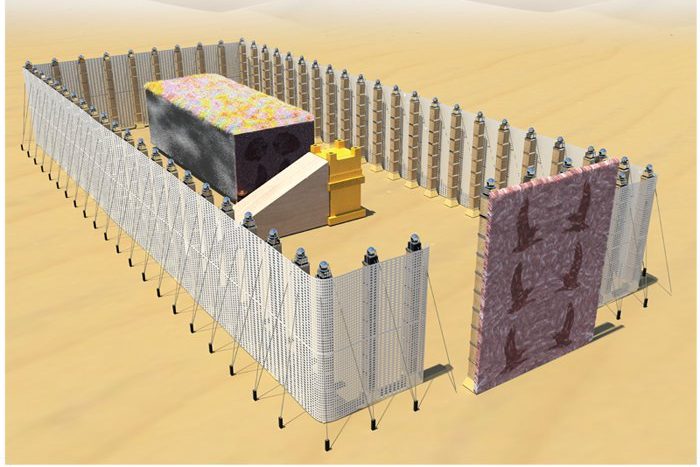After the Jewish People entered the Land of Israel, they conquered the Land, under the visible leadership of Yehoshua bin Nun, disciple of and successor to Moshe, then divided it among the Tribes using a “lottery,” both actions, conquest and division, under the invisible leadership and direction of HaShem. During this period, the spiritual center of the Jewish People continued to be, as it had been in the Wilderness, the “Mishkan.” The Talmud in Masechet Zevachim 118: tells us that the first site of the “Mishkan” in “Eretz Yisrael” was Gilgal (the name meaning “rolling off,” in the sense that the “shame of Egypt” was rolled off of them, by their having a mass circumcision; thereby binding themselves physically to Jewish destiny). The “Mishkan” was at Gilgal for fourteen years; seven during the period of conquest of the Land, and seven during the period of division of the Land among the Tribes of Israel.
 Afterwards, the Bible tells us (Yehoshua 18:1), “And the whole community of Israel assembled themselves together at Shiloh, and set up the “Mishkan” there. The “Mishkan” remained in Shiloh from the time of Yehoshua, all through the Period of the “Shoftim,” the “Judges,” the fifteen of whom led the Jewish People for a period of approximately 400 years, according to traditional sources and approximately 200 years, according to modern scholars.
Afterwards, the Bible tells us (Yehoshua 18:1), “And the whole community of Israel assembled themselves together at Shiloh, and set up the “Mishkan” there. The “Mishkan” remained in Shiloh from the time of Yehoshua, all through the Period of the “Shoftim,” the “Judges,” the fifteen of whom led the Jewish People for a period of approximately 400 years, according to traditional sources and approximately 200 years, according to modern scholars.
The story of Shmuel, the last and the greatest of the “Shoftim,” is told in Shmuel 1. It begins, reasonably enough, with his birth. Chanah, Shmuel’s mother, used to come up to Shiloh every year with Elkanah, her husband, and Penina, his other wife. Chanah was childless, and with a heavy heart, she stood praying to HaShem (in fact, we learn many of the Laws of Prayer from Chanah).
The Priest Eli at first glance thought that she was drunk, because “only her lips were moving,” but he couldn’t hear a word, and confronted her disapprovingly. But she assured him that she was far from drunk; only bitter at heart. She told Eli what kind of help she was praying for. He blessed her, and told her that she would have a child. Chanah dedicated Shmuel, the child who was born afterwards, to HaShem, and he was raised, after the age of weaning, by Eli at the “Mishkan.” When Shmuel reached manhood, Shiloh was destroyed by the Philistines, a fierce opponent of the Jews. At that point, Shmuel assumed the leadership of the Jewish People, with the vast approval of the nation, who realized his greatness, and he was able to subdue the Philistines.
The “Mishkan” was rebuilt at Nov, until that city of Priests was destroyed by Do’eg HaAdomi. Do’eg had done so at the command of an enraged Shaul, who had been informed that the citizens of that city had aided David, who was being pursued by King Saul.
The “Mishkan” was moved to Givon, for its last stop. After this, the Holy Temple, the “Beit HaMikdash,” would be built in Yerushalayim by Shlomo, the son of David.
The Talmud in Zevachim 118: cited above, states that the “Mishkan” was at Gilgal for 14 years, at Shiloh for 369 years, and at Nov and Givon, together for another 57 years. Thus the Presence of HaShem was with the Jewish People, in “Eretz Yisrael” before the building of the “Beit HaMikdash,” for a total of some 440 years.